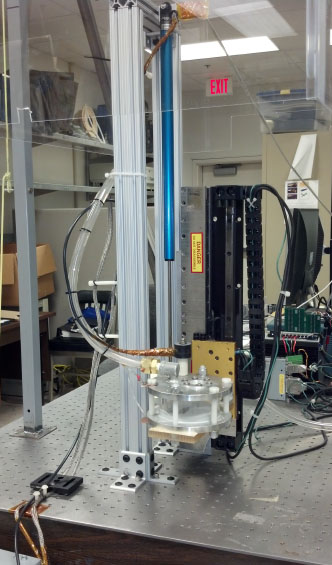Introduction

Granular electrification is the process in which particles that are part of a granular system collide, exchange charge, and transport charge through the system. This may generate macroscopic electrical potential differences, which are manifested in lightning and in electrical discharges of powders and other granular materials in the industrial setting. Granular electrification can also affect the spatial arrangement of particles in turbulent flow, affecting phenomena like scattering of light by clouds. Many investigations on this subject focus on the two-body collisional charged exchange processes, particularly looking at the role of particle surface chemistry, electrical properties, material properties, and surface curvature. Our work explores the collective role of particles in electrification.
Technique

We have built a shaker experiment (pictured right) to study electrification. It consists of a glass cell (pictured below; filled with granular materials) mounted on a motor that shakes the cell vertically for a given number of cycles. Two metal plates enclose the cell, and we measure the electric potential between the two plates over time.

Dissertations
- Freja Nordsiek, Transport in Rayleigh-stable experimental Taylor-couette flow and granular electrification in a shaking experiment, UMD 2015
Publications
Upcoming
